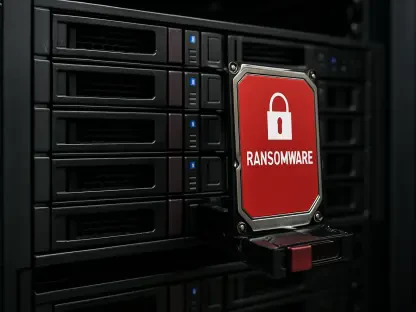In today’s digital age, cloud computing has become an indispensable part of business and personal data management. As the reliance on cloud services continues to increase, the need for resilient and adaptable cloud systems grows ever more urgent. This article explores how chaos engineering can be employed to build stronger, more resilient, and antifragile cloud infrastructures.
Understanding Chaos Engineering
The Philosophy Behind Chaos Engineering
Chaos engineering is an innovative approach that involves introducing controlled faults and disruptions into cloud systems. Unlike traditional methods, which often wait for failures to happen naturally, chaos engineering proactively identifies system weaknesses. By simulating real-world failures, engineers gain insights into how systems behave under stress, allowing for the development of more resilient architectures. This proactive strategy is crucial for anticipating and mitigating issues before they escalate into significant problems that could compromise cloud infrastructure integrity.
The philosophy behind chaos engineering is not to create chaos for its own sake but to learn from it. By deliberately causing disruptions, engineers can study the ripple effects, identify points of failure, and refine their systems accordingly. This approach is akin to stress-testing financial systems to ensure they can withstand economic shocks. The main distinction here is that, rather than reacting to unexpected disruptions, chaos engineering aims to make such reactions part of a continuous, systematic process. Thus, organizations can build systems that are not only fault-tolerant but also capable of adapting and improving in response to challenges.
Key Concepts and Benefits
One of the central tenets of chaos engineering is the concept of “antifragility.” Antifragile systems don’t just withstand disruptions; they become stronger and more efficient when exposed to stress and uncertainty. This quality is invaluable in cloud computing, where the ability to automatically detect and mitigate failures translates directly to enhanced system preparedness and resilience. Antifragility goes beyond mere robustness or resilience—it represents a system’s capacity to adapt and thrive in volatile conditions, thus continually improving its performance.
The benefits of chaos engineering are manifold. First, it enhances the detection and mitigation of potential system vulnerabilities. By exposing weaknesses in a controlled environment, engineers can preemptively address them before they manifest in real-world scenarios. Second, this methodology facilitates the creation of more reliable and robust cloud services. Routine stress-testing through chaos engineering ensures that systems can endure even the most severe disruptions, thereby minimizing downtime and service interruptions. Lastly, chaos engineering fosters a culture of continuous improvement and innovation within organizations, encouraging teams to think proactively about resilience and adaptability.
The Rise of Chaos Engineering
Increasing Cyber Threats
The urgent need for chaos engineering is underscored by the growing frequency and complexity of cyberattacks. For instance, incidents of Distributed Denial of Service (DDoS) attacks have increased dramatically, putting immense pressure on cloud infrastructures. These sophisticated assaults highlight the necessity for robust, proactive defense mechanisms that go beyond conventional security measures. As cyber threats evolve, traditional reactive approaches often fall short in addressing the complexities of modern digital landscapes.
Chaos engineering addresses this challenge by regularly testing cloud systems for potential weaknesses through simulated failures. These can range from server crashes and network outages to security breaches, each providing valuable insights into system vulnerabilities. By studying how systems respond to these simulated disruptions, engineers can build more robust architectures capable of withstanding and adapting to actual threats. The ability to predict and mitigate such attacks before they occur is a crucial advantage in maintaining system integrity and ensuring uninterrupted service.
Practical Applications and Methods
Chaos engineering involves regularly testing cloud systems for potential weaknesses by simulating various types of failures. These can range from server crashes and network outages to security breaches. By studying how systems respond to these simulated disruptions, engineers can build more robust architectures capable of withstanding and adapting to actual threats. The methodologies used in chaos engineering often include injecting faults in a controlled manner and monitoring system responses in real-time to gather actionable insights.
The practical applications of chaos engineering are broad and diverse. For example, some organizations employ tools like Chaos Monkey, developed by Netflix, which randomly disables production instances to test system resilience. By doing so, engineers can observe how their systems handle unexpected downtimes and make necessary adjustments. Other methods include network latency injection, where artificial delays are introduced in the network to study system behavior under adverse conditions. These practices enable the identification of latent issues that might not be apparent under normal operating conditions but could lead to significant problems during actual disruptions.
Integrating Chaos Engineering into Cloud Management
Proactive vs. Reactive Strategies
A key trend in the tech community is the shift from reactive to proactive cloud management strategies. Integrating chaos engineering into the software development lifecycle ensures that resilience is built into the system from the ground up. This approach includes embedding chaos engineering tools within the continuous integration and continuous deployment (CI/CD) pipeline, allowing for automatic robustness testing of new features and updates. By doing so, organizations can identify potential vulnerabilities before they become critical issues, thereby reducing the risk of unexpected failures in a live environment.
The proactive strategies facilitated by chaos engineering provide a significant edge over traditional reactive methods. In a reactive framework, issues are typically addressed only after they have caused noticeable disruptions, leading to potential losses in time and resources. Conversely, proactive strategies involve continuous testing and improvement, ensuring that systems are always prepared for the unexpected. This shift not only enhances system reliability but also instills a culture of vigilance and preparedness within the organization, encouraging teams to anticipate and mitigate potential threats preemptively.
Benefits of Early Integration
Early integration of chaos engineering practices helps in identifying vulnerabilities before they become critical issues. This proactive strategy reduces downtime and prevents costly outages, making it an essential component of modern cloud management frameworks. By embedding chaos engineering in the initial stages of development, systems are designed with resilience in mind, ensuring that they can handle disruptions effectively even before they go live.
The benefits of early integration extend beyond mere system robustness. It also leads to improved cost-efficiency in the long run. While the initial investment in chaos engineering tools and training may seem significant, the long-term savings from reduced downtime and fewer emergency fixes can be substantial. Moreover, the continuous feedback loop generated by chaos engineering practices allows for ongoing improvement, making systems increasingly efficient and reliable over time. This proactive approach also fosters collaboration and innovation, as teams work together to anticipate and solve potential issues before they escalate.
The Multifaceted Impact of Chaos Engineering
Enhanced Detection and Mitigation
Cloud systems employing chaos engineering can better detect and mitigate the effects of attacks and disruptions. By simulating failures, these systems can develop automated responses, significantly improving their overall resilience. This capability is particularly important in today’s threat landscape, where the speed and sophistication of cyberattacks are constantly evolving. Automated detection and mitigation not only reduce the time required to respond to incidents but also minimize the impact of disruptions on service delivery.
The enhanced detection and mitigation capabilities provided by chaos engineering are a game-changer for organizations relying on cloud services. These systems can quickly identify anomalies and trigger predefined responses, thereby containing potential threats before they cause significant damage. For instance, if a simulated DDoS attack is detected, the system can automatically reroute traffic or scale up resources to handle the increased load, ensuring uninterrupted service. This level of preparedness is crucial for maintaining customer trust and operational continuity in the face of growing cyber threats.
Reliability and Cost-Efficiency
Proactively identifying and addressing vulnerabilities leads to more reliable cloud services. Although initial investments in chaos engineering may seem significant, the long-term benefits—reduced downtime, improved reliability, and better resource allocation—far outweigh the costs. By preemptively testing and refining systems, organizations can avoid the costly repercussions of unplanned outages and ensure seamless service delivery even during disruptions.
The cost-efficiency of chaos engineering extends beyond mere financial savings. It also contributes to better resource management and allocation. By understanding the potential stress points in their systems, organizations can optimize their infrastructure to handle peak loads efficiently without over-provisioning. This optimization not only saves costs but also enhances overall system performance. Moreover, the insights gained from chaos engineering experiments can inform future design decisions, leading to more robust and scalable architectures. In this way, chaos engineering not only improves immediate system reliability but also supports long-term strategic planning and growth.
Building a Culture of Resilience
Implementing chaos engineering fosters a company-wide culture of resilience. Teams are encouraged to continuously think about potential failures and prepare for them, driving innovation and promoting a resilient mindset throughout the organization. This cultural shift is vital for staying ahead in an ever-evolving digital landscape, where the ability to adapt and recover from disruptions can be a key differentiator.
The culture of resilience nurtured by chaos engineering goes beyond technical preparedness. It also promotes a mindset of continuous improvement and proactive problem-solving. When teams are accustomed to anticipating and addressing potential issues, they become more innovative and collaborative. This mindset permeates all levels of the organization, from development and operations to management and strategic planning. As a result, companies become better equipped to handle not just technological challenges but also broader business disruptions. In essence, chaos engineering not only fortifies the technical infrastructure but also strengthens the organizational ethos, creating a more adaptive and resilient company as a whole.
Chaos Engineering in Action
Case Studies and Success Stories
Several organizations have already successfully integrated chaos engineering into their cloud management practices. These case studies illustrate how chaos engineering can lead to more robust and adaptable cloud infrastructures, capable of withstanding even sophisticated cyber threats. Companies like Netflix, Google, and Amazon have pioneered the use of chaos engineering tools to enhance their system resilience and ensure uninterrupted service delivery.
One notable example is Netflix’s development of the Chaos Monkey tool, which deliberately shuts down instances in their production environment to test system resilience. Through this approach, Netflix has been able to identify and rectify vulnerabilities before they affect customers, maintaining high service availability and performance. Similarly, Google’s use of chaos engineering has enabled them to build highly resilient cloud services that can automatically recover from disruptions, ensuring consistent user experiences. These success stories highlight the tangible benefits of chaos engineering and its critical role in modern cloud management.
Best Practices and Future Trends
In today’s digital era, cloud computing has become essential for both business operations and personal data management. The growing dependence on cloud services has underscored the importance of creating resilient and adaptable cloud systems. As companies increasingly rely on these services for critical operations, the demand for robust cloud infrastructures has never been more pressing. This brings us to the concept of chaos engineering—a method that can play a crucial role in building stronger, more resilient, and antifragile cloud environments. Chaos engineering is about testing and improving cloud systems by intentionally introducing failures and disruptions. This approach helps identify weaknesses and allows engineers to address potential issues before they become actual problems. By simulating real-world conditions, chaos engineering prepares cloud infrastructures to withstand unforeseen challenges, ensuring that they remain reliable under all circumstances. This article delves into the importance of chaos engineering and how it can be leveraged to enhance the resilience and adaptiveness of cloud computing systems, making them better equipped to handle the uncertainties of the digital world.









